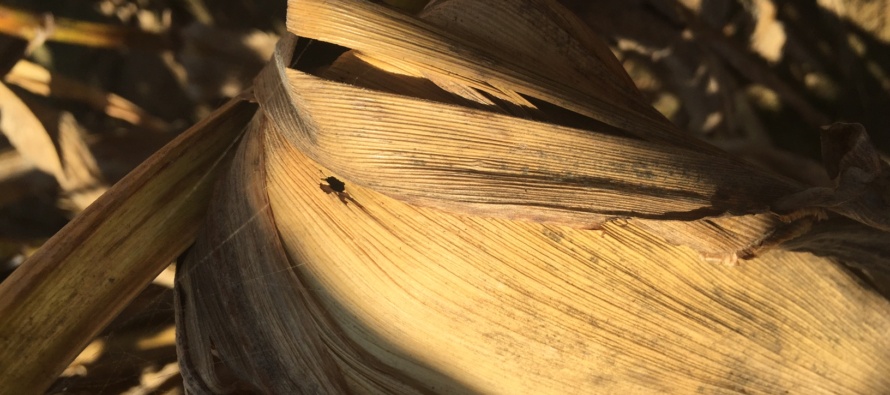Ear Drop in Non-Bt Corn

Related Articles
- 2010 Soybean And Corn Variety Trial Data 3
- Mississippi Cotton Insect Situation of 2010: A Look Back 3
- Rice Insecticidal Seed Treatment Recommendations for Mississippi in 2011 0
Latest Tweets
Over the last 7 days we have had numerous calls about ear drop in non-Bt corn fields. In 99.9% of the cases, the amount of ears hitting the ground is completely negligible and will not result in any yield loss at all. When this was first reported, it was obvious that it was due to some kind of insect feeding. The first diagnosis was southwestern corn borer (SWCB) larvae because it is not uncommon to see SWCB tunnel ear shanks in non-Bt corn but this was a light corn borer year. However, this did not make any sense due to the fact that many fields were trapped year long resulting in extremely low numbers. Also, when SWCB tunnel ear shanks it is still uncommon for ears to drop to the ground because they are not girdled. In the early 2000’s, it was very common to find nearly all ear shanks in fields tunneled by SWCB prior to widespread adoption of Bt hybrids.
As word spread this week, more and more calls came in giving extension and Ag consultants the opportunity to examine this problem much closer. Turns out the problem is in fact insect related but it is fall armyworm (FAW) and not SWCB. In many of these fields, there is very little kernel feeding associated with FAW. This is because it was a late flight in most cases when corn kernels had already hardened off and were not preferred feeding sites. The insects were drawn to the very base of the cob and ear shanks where there was still soft tissue. Damage consisted of partly or completely chewed through ear shanks found at the base of the cob. The amount of rain fall over the past few weeks has caused harvest delays further exasperating the problem. Fallen ears has not really been an issue in regards to yield because on average the number of ears dropping has been very low relative to the number of plants per acre.
This phenomenon of FAW feeding in this manner is rare in MS but this has been the biggest FAW year that many of us have ever seen in our career. The same situation is more commonly reported in areas like Brazil where FAW infest corn in very high populations annually.
Could it have been prevented?
Likely not at all. The likelihood of us ever making a recommendation for FAW infestations while corn is drying down is very low because it is not economical nor has it resulted in yield loss. The very worst reported field cut 215 bushels an acre. I know that it is very easy to look down a clean row of dry corn and see a cob laying on the ground, but in fact when actual counts are made most of producers have come up with less than 1% of ear drop.
Below are several pictures showing FAW causing ear shank damage.

Photo by Jeff Hollowell

Photo By Jeff Hollowell

Photo By Jeff Hollowell

Photo by Jeff Hollowell

Photo By Lauren Greene

Photo By Lauren Greene

Photo By Lauren Greene

Photo By Angus Catchot

Photo By Angus Catchot

Photo By Angus Catchot




Let me tell You a sad story ! There are no comments yet, but You can be first one to comment this article.
Write a comment